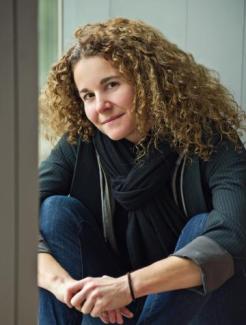
It was an ordinary, unseasonably cool, summer day in a sleepy town just forty minutes outside of Berlin. Oranienburg once was home to Sachsenhausen concentration camp, one of the second-generation camps the Nazi regime established in 1936. In their first iteration, camps such as Dachau and Sachsenburg functioned primarily as holding pens for individuals kept in Schutzhaft [protective custody] and contained mainly political prisoners and suspect individuals interned during the first months and years after the Nazi assumption of power in January 1933. Only in 1936, in the context of rearmament and in preparation for conquest, were camps built as and transformed into labor camps which in turn became central nodes in the political economy of the regime. Now, one finds Gedenkstätten at many former camps: places for commemoration, research and education. At the Memorial and Museum Sachsenhausen, I was sitting on a concrete bench waiting for the archives to open. I noticed an inconspicuously designed trashcan, built into the bench, tactically submerged and artfully disguised, yet visible enough to prevent the accumulation of visitor rubbish.
The many sites of torture and murder that the Nazi regime bequeathed to the Federal Republic of Germany were preserved not to inspire heritageization, but Aufarbeitung and Bewältigung of a burdensome past. Since the first Historian’s Debate (Historikerstreit) of the late 1980s, rightwing pundits and politicians have been critical of what they describe as Schuldkult or an obsession with collective guilt. Instead, they insist that Germans had done penance enough and often pointed to other genocides to relativize the Nazi crimes. My interest here is quite different. Rather than suggesting that Germans ought to be absolved from their responsibility to engage with the Holocaust, I suggest they might want to move beyond the rather scripted responses that characterize German Betroffenheitskultur. By forcing into view the trashcans of the Memorial and the waste regime that Nazism espoused, I suggest that memory has failed to account for some uncomfortable continuities that locate the Holocaust along a continuum of violence endemic to carbon capitalism, a continuum that stretches from the slow violence of everyday toxic exposure and labor exploitation to torture, physical destruction and indeed genocide.
History, much like the architecture at Sachsenhausen, is layered. The design of the Gedenkstätte is superimposed onto the structures of the camp. The architecture of the memorial follows a particular design – the barriers to our understanding that wall off history from the present, they are made concrete here: cement walls become permeable to visitors who walk through the gaps. Carefully, meticulously, the Gedenkstätte is designed to elucidate the violence that took place, attempting to make it accessible, stacking shock against empathy. I am not an architect. I read structures as I read historical documents. Hence, I got stuck on the trashcan. Masking the mundane functionality of the infrastructure of waste removal, the designers of the memorial seem to have carefully thought about waste. The trashcans are visible enough to guarantee the conscientious disappearance of unwanted substances; they nonetheless blend nearly seamlessly into the Gesamtkunstwerk of the memorial.
Read the entire article HERE
